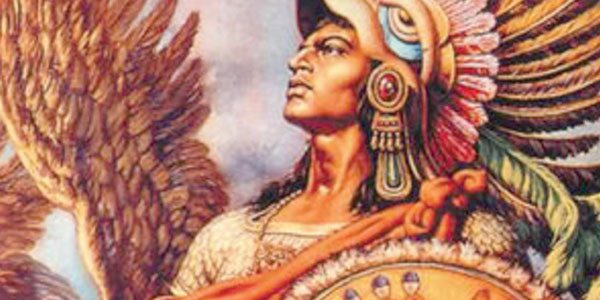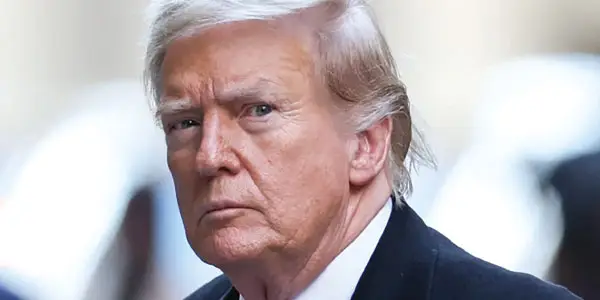
Hay lecciones que nunca se aprenden, aunque pasen casi 500 años. Bien le hubiera servido al presidente de México, Enrique Peña Nieto, haber leído la historia de Moctezuma II antes de invitar a Donald Trump a su casa. Ahora ya es demasiado tarde.
Mientras releía el extraordinario libro “La visión de los vencidos”, publicado por la Universidad Nacional Autónoma de México, me pasó algo curioso. Cada vez que leía el nombre de Moctezuma, pensaba que Peña Nieto hubiera hecho lo mismo. Y cada vez que leía “Hernán Cortés”, me acordaba de Trump.
Cuando Moctezuma se enteró de que los españoles habían arribado a las costas de Veracruz en 1519, trató de asustarlos y les “envió todos cuantos pudo, los presagiadores, los magos y también envió guerreros, valientes, gente de mando”, según sus informantes le contaron al misionero franciscano Bernardino de Sahagún.
Eso no asustó a los españoles, que ya tenían la intención de llegar hasta la gran Tenochtitlan. Moctezuma, entonces, les envió regalos: “banderas de oro, banderas de pluma de quetzal y collares de oro”. Pero en lugar de regresar a sus navíos, según narra el libro, los españoles “estaban deleitándose, levantaban el oro … como que se les renovaba y se les iluminaba el corazón”.
Moctezuma, que todavía creía que los españoles eran dioses, se equivocó; reavivó su curiosidad y deseo. Moctezuma, finalmente, se reunió por primera vez con Cortés un 8 de noviembre de 1519.
En ese encuentro, con traducción de la Malinche, Moctezuma le dijo a Cortés: “Señor nuestro … Has arribado a tu ciudad: México. Aquí has venido a sentarte en tu trono”. El conquistador español sólo le respondió: “Tenga confianza Moctezuma, que nada tema. Nosotros mucho lo amamos”.
(Aquí el corazón me brincó. ¿Acaso Trump — quien ha insultado en innumerables ocasiones a los inmigrantes mexicanos — no ha dicho también que ama a México y a los mexicanos? Cortés y Trump usaron la misma estrategia con los líderes de México; los llenan de halagos y luego los atrapan).
Moctezuma, demostrando poca inteligencia y dominio, se llevó a Cortés y a su comitiva a su casa, la Casa Real. El tlatoani había metido al enemigo en su propio hogar. Una vez ahí, los españoles tomaron control de la situación, pusieron a Moctezuma bajo vigilancia, se apoderaron de sus riquezas y disparando un cañón, asustaron a la población.
Este incidente me recuerda tanto cuando Peña Nieto invitó a Trump a la casa presidencial de Los Pinos en agosto del 2016. Ya dentro, Trump tomó absoluto control de la conferencia de prensa y escogió a los periodistas que iban a hacer las preguntas. El presidente Peña Nieto, sorprendido y asustado, no se atrevió a decirle en público que México no pagaría por el muro. Se convirtió en cautivo de su invitado.
Los habitantes de Tenochtitlan, mucho más listos y perceptivos que su líder, se dieron cuenta de lo que estaba ocurriendo y se le rebelaron a Moctezuma y a sus captores. Cortés, quien regresaba de un viaje, sacó a Moctezuma a un lugar alto para que le hablara y apaciguara a su pueblo. Pero ahí “le trataron mal, llamándole cobarde y enemigo de su patria”. Moctezuma, aparentemente, murió por una piedra. “Dicen que uno de los indios le tiró una pedrada por lo cuál murió”, escribió Fernando de Alva Ixtlilxochitl, un historiador de la Nueva España que tuvo abuelos indígenas y españoles.
En esta época la gente ya no expresa su descontento con sus líderes a pedradas, sino que los destroza en Twitter, Facebook y en las encuestas.
Perdónenme las licencias históricas que me estoy tomando. Entiendo que estamos hablando de dos periodos totalmente distintos. Pero son muy similares las actitudes serviles y débiles de Moctezuma y Peña Nieto ante una amenaza externa.
Lo menos que esperaban los mexicanos de sus líderes, en los siglos XVI y XXI, era un poco de dignidad ante las ofensas y amenazas del exterior. Toda resistencia siempre comienza con una posición digna y con un rotundo “NO”. Pero Moctezuma y Peña Nieto nunca lo entendieron.
Claro que no podemos obligar a Peña Nieto a que lea algunos libros de historia de México. Pero ojalá alguien se los leyera y luego le pasara un breve resumen para no repetir los mismos errores cinco siglos después. Así él se hubiera ahorrado las críticas ylos tuitazos … y México la vergüenza.
(Jorge Ramos, periodista ganador del Emmy, es el principal director de noticias de Univision Network. Ramos, nacido en México, es autor de nueve libros de grandes ventas, el más reciente de los cuales es “A Country for All: An Immigrant Manifesto”.)
(¿Tiene algún comentario o pregunta para Jorge Ramos? Envíe un correo electrónico a Jorge.Ramos@nytimes.com. Por favor incluya su nombre, ciudad y país.)
________________________________________________________________________________
From Montezuma to Peña Nieto
Some lessons just never sink in, even after 500 years.
Mexican president Enrique Peña Nieto should study Mexican history more — particularly the history of Montezuma, the Aztec ruler, and his dealings with the Spanish conquistador Hernán Cortés. More attention to those long-ago events might have been illuminating for Peña Nieto when Donald Trump came to Mexico last year. Now it’s too late.
I recently reread “The Broken Spears: The Aztec Account of the Conquest of Mexico,” Miguel León-Portilla’s wonderful book about the fall of the Aztec empire half a millennium ago. Every time I read about a mistake that the Aztec ruler Montezuma made, I thought that Peña Nieto would have done the same, had he been in Montezuma’s place. And every time I read the name Cortés, I thought of Trump.
According to the book, when Montezuma learned that the Spaniards had arrived on the shores of Veracruz around 1519, he tried to scare them off. Sources told the Franciscan missionary Bernardino de Sahagún that Montezuma sent “everyone he could: fortune tellers, wizards, brave warriors.” But that didn’t scare off the Spaniards, who were intent on reaching the capital, Tenochtitlán.
So Montezuma changed course and sent them gifts of gold and jewelry. But instead of taking the gifts and leaving, the Spaniards — lifting the gold “as if it … brightened their hearts,” according to “The Broken Spears” — were only encouraged to seek more. Montezuma, still believing the Spaniards were gods, misplayed his hand. He only intensified their curiosity and desire for treasure.
Montezuma met Cortés for the first time on Nov. 8, 1519, after the Spaniard marched an army to the capital of Tenochtitlán, what is today Mexico City. During that meeting, Montezuma spoke with Cortés through La Malinche, the conquistador’s translator and mistress. “My lord,” Montezuma told Cortés, “You have arrived in your city … Come to the land, come and rest: Take possession of your royal houses, give food to your body.”
“Be confident, Montezuma,” Cortés responded. “Do not be afraid. We love you very much.”
Here, my heart skipped a beat. Hasn’t Trump — who has repeatedly insulted Mexican immigrants — also said that he loves Mexico and Mexicans? Cortés and Trump used the same strategy with Mexican leaders: Shower them with flattery, then trap them.
Montezuma made the colossal mistake of welcoming his enemies into his home — and the Spaniards took control. They eventually captured Montezuma and plundered the Aztecs’ treasures.
This incident reminds me of what happened when Peña Nieto invited Trump to Los Pinos, the presidential residence, in Mexico City in August 2016. Once inside, Trump took over a news conference and picked the reporters who were allowed to ask questions. Peña Nieto was taken by surprise, and he seemed a bit scared. Though it was on everyone’s mind, he didn’t dare say in public that Mexico wouldn’t pay for the border wall that Trump wants to build. Essentially, Peña Nieto became a captive of his guest.
The people of Tenochtitlán, smarter and more perceptive than their leader, realized what was happening and eventually revolted against Montezuma and his captors. When unrest broke out, Cortés ordered Montezuma to speak to his people and placate them. But the Aztecs had turned against Montezuma, and branded him a coward for giving in to the Spanish. Montezuma was soon killed by a stone thrown at him by one of his own people, according to Fernando de Alba Ixtlilxóchitl, a 17th-century historian.
Today, people don’t demonstrate their disapproval with stones. Instead, they pelt their leaders on social media and in opinion polls. (Please forgive the historical license I’m taking in making this argument — I understand that these are two very, very different eras. But the weak and subservient attitudes that both Montezuma and Peña Nieto expressed in the face of an external threat are quite similar.)
Mexicans in the 16th century expected a little dignity from their leader when confronted by a threat — just as Mexicans do in the 21st century. Montezuma and Peña Nieto didn’t understand that every act of resistance begins with an honorable position and a resounding “no.”
Of course we can’t force Peña Nieto to read more about Mexican history. But let’s hope that an aide will help him out and offer the president a brief summary of Montezuma’s missteps from centuries ago so that he can avoid repeating them. Had Peña Nieto already learned these lessons from the past, he would have spared himself a lot of criticism and angry tweets — and he would have avoided embarrassing Mexico.









